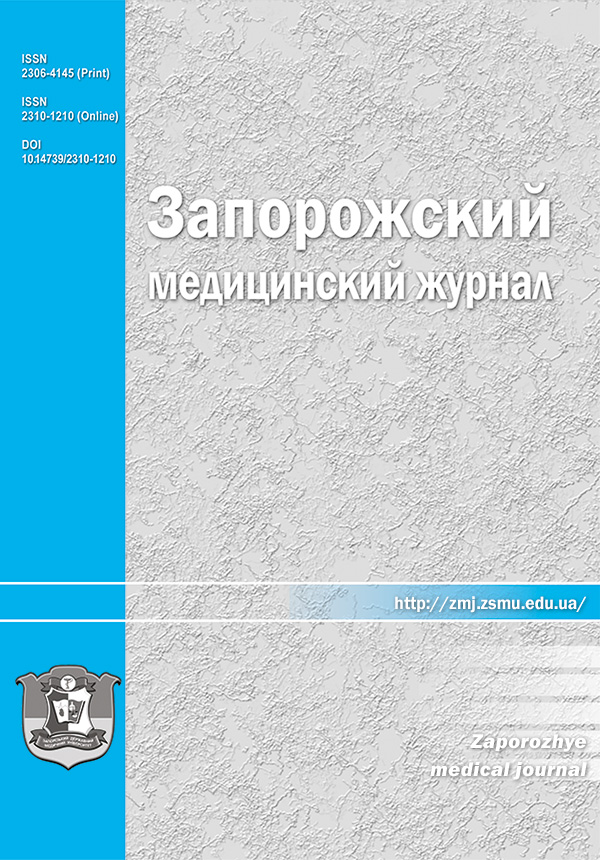Study of the qualitative composition and quantitative content of some groups of BAS in dietary supplements with green tea leaf extract
DOI:
https://doi.org/10.14739/2310-1210.2021.1.224932Keywords:
spectrophotometry, food additives, caffeine, catechin, thin layer cromatographyAbstract
Recently, there has been a high demand from the population for dietary supplements that have antioxidant activity. First of all, these are dietary supplements with green tea leaf extract, because green tea contains catechins in a fairly high amount. Nowadays, according to the current legislation of Ukraine the qualitative composition and quantitative content of biologically active substances in dietary supplements are not established, which to a certain extent affects the quality and safety of these products.
The aim of the study was to determine the qualitative composition and quantitative content of some groups of BAS in dietary supplements with green tea leaf extract.
Materials and methods. Three dietary supplements from different manufacturers “Green Tea Extract”, “Green Tea Extract”, “Green Tea” were chosen for the study. Qualitative analysis was performed by thin layer chromatography, for quantification spectrophotometry in the UV-region was used.
Results. The presence of catechins was found in the studied dietary supplements, caffeine was found only in trace amounts. The total content of catechins is 146.80 ± 1.36 mg, 79.00 ± 0.88 mg, 28.00 ± 0.75 mg, and in terms of green tea extract, which is stated in dietary supplements
for dietary supplements “Green Tea Extract”, “Green Tea Extract”, “Green Tea”, respectively.
Conclusions. Qualitative and quantitative analysis of some groups of BAS of three dietary supplements with green tea leaf extract was performed. It was found that dietary supplements “Green Tea Extract” and “Green Tea” meet the requirements of the US Pharmacopoeia 38 in terms of catechins. Based on the study, it can be concluded that the problem of compliance with dietary supplements is relevant today and requires the introduction of regulatory documentation for the detection and determination of biologically active substances in dietary supplements.
References
Baraboy, V. A. (2008). Katekhiny chainogo rasteniya: struktura, aktivnost', primenenie [Catechins of tea: structure, activity, application]. Biotechnology, (3), 25-36. [in Russian].
Hotsulia, T. S., Samko, A. V., & Halytsia, V. V. (2011). Diietychni dobavky u farmatsii [Dietary supplements in pharmacy]. Zaporozhye medical journal, 13(2), 33-37. [in Ukrainian].
Grinkevich, N. I. & Ladygina, E. Ya. (Eds.). (1989). Farmakognoziya. Atlas. [Pharmacognosy. Atlas]. Medicina. [in Russian].
State Enterprise Ukrainian Scientific Pharmacopoeial Center of Medicines Quality (2014). Derzhavna Farmakopeya Ukrayiny [The State Pharmacopoeia of Ukraine] (2nd ed.). Vol. 3. State Enterprise Ukrainian Scientific Pharmacopoeial Center of Medicines Quality. [in Ukrainian].
Kartsova, L. A., Deev, V. A., Bessonova, E. A., Belous, O. G., & Platonova, N. B. (2019). Opredelenie polifenolnykh antioksidantov v obraztsakh zelenogo chaya. Kharakteristicheskie khromatograficheskie profile [Determination of polyphenol antioxidants in the samples of green tea. The characteristic chromatographic profiles]. Analitika i kontrol, 23(3), 377-385. http://dx.doi.org/10.15826/analitika.2019.23.3.010 [in Russian].
Ostanіna, N. V., & Kuznetsova, O. M. (2013). Stvorennia dodatkovoho rozdilu "Diietychni dobavky" Derzhavnoi Farmakopei Ukrainy - shliakh do zabezpechennia naselennia Ukrainy yakisnoiu produktsiieiu [Create an extended partition "Dietary supplements" State Pharmacopoeia of Ukraine - a way to ensure high-quality products of the ukrainian population]. Farmatsevtychnyi zhurnal, (1), 16-20. [in Ukrainian].
Ministry of Health of Ukraine. (2013, December 19). Pro zatverdzhennia Hihiienichnykh vymoh do diietychnykh dobavok [About the statement of Hygienic requirements to dietary supplements (No. 1114)]. https://zakon.rada.gov.ua/laws/show/z2231-13#Text
Verkhovna Rada of Ukraine. (1997, December 23). Pro osnovni pryntsypy ta vymohy do bezpechnosti ta yakosti kharchovykh produktiv [On Quality and Safety of Food Products and Food Raw Materials (No.771/97-VR)]. https://zakon.rada.gov.ua/laws/show/771/97-%D0%B2%D1%80#Text
Dekant, W., Fujii, K., Shibata, E., Morita, O., & Shimotoyodome, A. (2017). Safety assessment of green tea based beverages and dried green tea extracts as nutritional supplements. Toxicology letters, 277, 104-108. https://doi.org/10.1016/j.toxlet.2017.06.008
Engelhardt, U. H. (2013). Chemistry of Tea. In J. Reedijk (Ed.). Reference Module in Chemistry, Molecular Sciences and Chemical Engineering (pp. 999-1032). Elsevier. https://doi.org/10.1016/B978-0-12-409547-2.02784-0
Houston, N., & Kimball, A. B. (2014). Green Tea Extract. In K. F. Patrcia (Ed.). Cosmeceuticals and Cosmetic Practice (pp. 122-132). John Wiley & Sons, Ltd. https://doi.org/10.1002/9781118384824.ch12
Kolahdouzan, M., & Hamadeh, M. J. (2017). The neuroprotective effects of caffeine in neurodegenerative diseases. CNS neuroscience & therapeutics, 23(4), 272-290. https://doi.org/10.1111/cns.12684
Reich, E., & Schibli, A. (2007). High-performance thin-layer chromatography for the analysis of medicinal plants. Thieme. https://doi.org/10.1055/B-002-66241
The United States pharmacopeia 38: Official from May 1, 2015: The national formula 33. 2015. Rockville, MD: United States Pharmacopeial Convention.
USP Dietary Supplements Compendium (2015). The United States Pharmacopeial Convention. Powdered Decaffeinated Green Tea Extract.
EFSA Panel on Food Additives and Nutrient Sources added to Food (ANS), Younes, M., Aggett, P., Aguilar, F., Crebelli, R., Dusemund, B., Filipič, M., Frutos, M. J., Galtier, P., Gott, D., Gundert-Remy, U., Lambré, C., Leblanc, J. C., Lillegaard, I. T., Moldeus, P., Mortensen, A., Oskarsson, A., Stankovic, I., Waalkens-Berendsen, I., Woutersen, R. A., … Wright, M. (2018). Scientific opinion on the safety of green tea catechins. EFSA journal. European Food Safety Authority, 16(4), Article e05239. https://doi.org/10.2903/j.efsa.2018.5239
Downloads
Published
How to Cite
Issue
Section
License
Authors who publish with this journal agree to the following terms:
Authors retain copyright and grant the journal right of first publication with the work simultaneously licensed under a Creative Commons Attribution License that allows others to share the work with an acknowledgement of the work's authorship and initial publication in this journal. 

